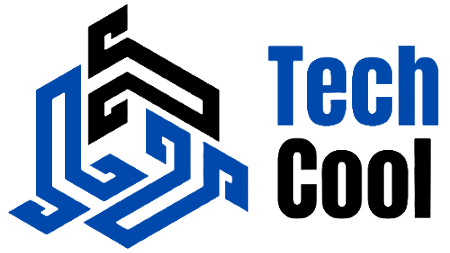Smart wearables have emerged as a transformative technology, seamlessly integrating computing capabilities into everyday attire to enhance productivity, monitor health, and provide personalized experiences. In this comprehensive guide, we delve into the latest advancements and applications of smart wearables, from fitness trackers and smartwatches to augmented reality glasses and smart clothing.
1. Introduction to Smart Wearables
Smart wearables encompass a wide range of electronic devices that can be worn on the body, offering functionality beyond traditional accessories. These devices typically include sensors, processors, and wireless connectivity, enabling them to collect data, perform computations, and interact with other devices and services. From tracking fitness metrics and monitoring health parameters to providing notifications and navigation assistance, smart wearables offer a myriad of features designed to enrich and simplify daily life.
2. Fitness Trackers: Beyond Step Counting
Fitness trackers are among the most popular and widely adopted smart wearables, designed to monitor physical activity, track exercise performance, and promote overall health and wellness. The latest fitness trackers feature advanced sensors, such as heart rate monitors, accelerometers, and GPS receivers, to provide accurate and real-time data on steps taken, distance traveled, calories burned, and sleep patterns. These devices also offer features such as workout tracking, goal setting, and personalized coaching to motivate users and help them achieve their fitness goals.
3. Smartwatches: The Ultimate Wearable Companion
Smartwatches have evolved from simple timekeeping devices to sophisticated wearable computers, offering a wide range of features and functionalities. In addition to displaying notifications, making calls, and sending messages, modern smartwatches can track fitness metrics, monitor heart rate and blood oxygen levels, and even perform electrocardiograms (ECG). With built-in GPS, NFC, and voice assistants, smartwatches provide users with convenient access to information, communication, and navigation, making them indispensable companions for modern life.
4. Augmented Reality (AR) Glasses: Seeing the World Differently
Augmented reality (AR) glasses represent the next frontier in wearable technology, overlaying digital information and virtual objects onto the user’s field of view. AR glasses enable hands-free interaction with digital content, providing immersive experiences for gaming, navigation, remote assistance, and productivity applications. The latest AR glasses feature lightweight and ergonomic designs, high-resolution displays, and advanced sensors for spatial mapping and gesture recognition, opening up new possibilities for work, entertainment, and social interaction.
5. Smart Clothing: Fashion Meets Functionality
Smart clothing integrates electronic components and sensors into garments and accessories, offering functionality such as biometric monitoring, temperature regulation, and gesture control. Smart textiles embedded with conductive fibers and sensors can monitor physiological parameters such as heart rate, respiration rate, and body temperature, providing valuable insights into health and performance. Smart clothing can also incorporate heating elements, haptic feedback, and programmable LEDs for enhanced comfort, safety, and personalization.
6. Hearables: Wireless Audio and Beyond
Hearables are wearable devices designed to enhance audio experiences, offering features such as wireless audio streaming, noise cancellation, and voice assistance. In addition to playing music and making calls, hearables can monitor health metrics such as heart rate, activity levels, and even cognitive function. The latest hearables feature advanced audio processing algorithms, biometric sensors, and machine learning capabilities to deliver personalized audio experiences and improve user well-being.
7. Wearable Health Monitors: Keeping Tabs on Vital Signs
Wearable health monitors provide continuous monitoring of vital signs and health parameters, enabling early detection of medical conditions and proactive management of health and wellness. These devices can measure parameters such as heart rate, blood pressure, blood oxygen saturation, and electrocardiograms (ECG) in real-time, providing users with valuable insights into their health status and facilitating communication with healthcare providers. Wearable health monitors empower individuals to take control of their health and make informed decisions about lifestyle and medical interventions.
8. Fashion-Tech Collaborations: Blending Style and Technology
Fashion-tech collaborations are driving innovation in smart wearables, merging cutting-edge technology with stylish design to create wearable devices that appeal to fashion-conscious consumers. Collaborations between technology companies and fashion brands have led to the development of smart jewelry, luxury smartwatches, and designer smart clothing that seamlessly integrate technology into everyday attire. These collaborations highlight the convergence of fashion and technology and demonstrate the potential for smart wearables to become fashion statements and lifestyle accessories.
9. Privacy and Security Considerations
As smart wearables become more integrated into daily life, privacy and security considerations become increasingly important. Wearable devices collect and process sensitive personal data, raising concerns about data privacy, security breaches, and unauthorized access. Manufacturers and developers must implement robust security measures, such as data encryption, access controls, and secure authentication mechanisms, to protect user data and ensure the confidentiality and integrity of wearable devices and associated services.
10. Future Trends and Innovations
The future of smart wearables holds exciting possibilities, with ongoing research and development efforts focused on enhancing functionality, usability, and integration into everyday life. Future trends in smart wearables may include advances in biometric sensing, gesture recognition, augmented reality displays, and personalized health monitoring. As technology continues to evolve, smart wearables are poised to become even more versatile, intuitive, and indispensable tools for enhancing productivity, health, and well-being.
FAQs (Frequently Asked Questions)
Q: How do smart wearables benefit users in daily life?
A: Smart wearables offer users a range of benefits, including convenience, connectivity, and enhanced functionality. They can help users track fitness goals, stay connected with notifications and calls, navigate unfamiliar surroundings, monitor health metrics, and even enhance productivity with hands-free access to information and assistance.
Q: Are smart wearables suitable for all age groups?
A: Smart wearables come in a variety of designs and functionalities, making them suitable for users of all age groups. From fitness trackers for active individuals to smartwatches for professionals and smart clothing for health monitoring, there are smart wearables tailored to meet the needs and preferences of users across different demographics.
Q: What are some potential challenges associated with smart wearables?
A: Some potential challenges associated with smart wearables include battery life, data privacy and security concerns, compatibility with existing devices and platforms, and user acceptance and adoption. Manufacturers and developers must address these
challenges through continuous innovation, user education, and collaboration with stakeholders to ensure a seamless and secure user experience.
Conclusion
Smart wearables have emerged as versatile and indispensable tools for enhancing productivity, monitoring health, and providing personalized experiences in daily life. From fitness trackers and smartwatches to augmented reality glasses and smart clothing, the latest advancements in wearable technology offer a myriad of features and functionalities designed to enrich and simplify everyday activities. As smart wearables continue to evolve and integrate into daily life, they hold the potential to transform how we work, communicate, and interact with the world around us. By embracing innovation, addressing privacy and security concerns, and fostering collaboration between technology and fashion industries, smart wearables will continue to shape the future of wearable technology and redefine the possibilities of connected living.


